Future, Beware!
Wars have been an integral part of mankind’s history. Atrocities against civilians have been a common part of wars, at times perpetrated as part of a strategy by one or more of the fighting sides. Other times atrocities have been perpetrated as the central goal of a conflict. The victims of these campaigns often seek assistance and protection from outside parties, but such help, if it arrives, is often too little or too late for many.
As we look back, it seems that almost no group of people has been immune to genocidal attacks. Animosity between some groups goes back hundreds of years and feeds violent incursions that flare up on occasion, devastating lives and communities time and again. The roles of the oppressor, victim, and witness may change from one conflict to the next, but the cycle of violence continues. As our ability to monitor these conflicts and the cries for help that follow increases, it does not always increase the chances of the oppressed for survival. With all that we have learned, we still ask: How many repeated lessons will history need to teach before we are safe as people and a society from becoming involved in the next genocide, whether as victim, bystander, or even perpetrator?
The images that make up this collection were taken as part of my project to examine the subject of the Shoah through the eyes of Jewish-American teens. The places and events depicted here can be experienced by anyone who finds themselves looking at each other over fences or gun sights. Awareness of humanity can be fleeting at times and vivid only when personal. Retaining it for oneself may not always be as clear or as simple as a choice.
My wish for this exhibit and the events associated with it is that they cause us to view and learn from the past, so that we may enable a better future for us all.
Ophir Palmon
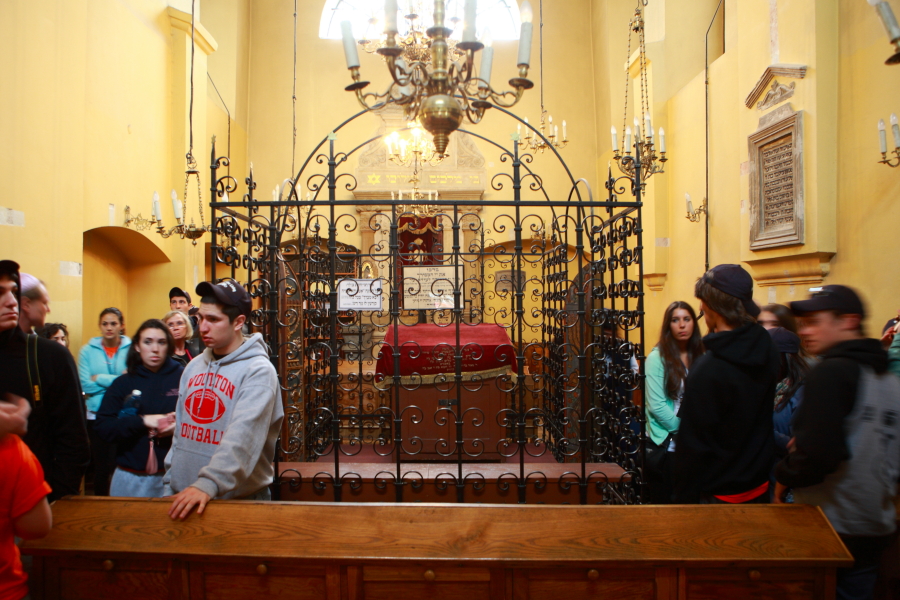
The Old New
The New Synagogue, also known as Remuh Synagogue, located in the heart of Kazimierz, Krakow’s historic Jewish Quarter. Built in 1558, this synagogue now serves the small Jewish community of Krakow and many visitors to the city.
Krakow, Poland
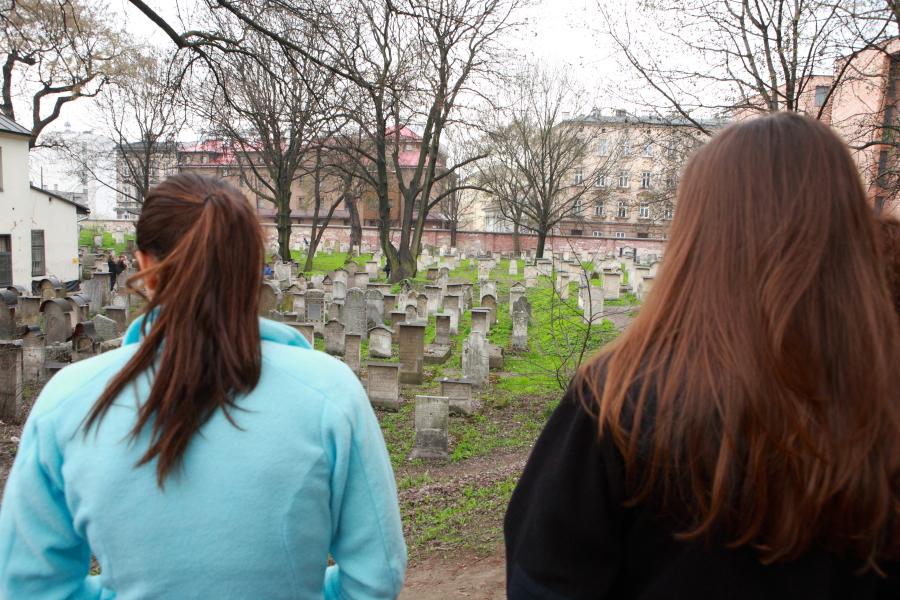
The Quiet Yard
The Remuh Cemetery, also known as the Old Jewish Cemetery of Krakow, is located right next to the Remuh Synagogue. The cemetery was established in the fifteenth century, and closed around 1800 when a new Jewish cemetery opened nearby. The Remuh Cemetery was destroyed during the Nazi occupation of Poland. In order to humiliate the Jewish community, its walls were torn down and the headstones were used to pave roads and in other construction projects. After the war, these headstones were collected from the surrounding area and returned to the cemetery.
Krakow, Poland

FootSteps
A group of teens walks through the alleys of the Krakow Jewish quarter for Kabbalat Shabbat, a service which Jews observe to usher in the Sabbath (Saturday), the holy day of rest. Much of the Jewish Quarter is kept in its pre-war appearance, including streets made of cobblestones and “Jewish-themed” restaurants catering to tourists.
Krakow, Poland

Service in the Square
A group of Jewish American teens celebrates Shabbat service in the square of the Old Synagogue, now The Historical Museum of the City of Krakow. In 1938 the Jewish community numbered over 60,000; about a quarter of the city’s population. Today the community is very small, and Jewish religious services are held mostly by visitors to the city.
Krakow, Poland

Faces in a Window
The Oswiecem Synagogue is located roughly 30 miles west of Krakow. Oswiecem was once a home to thousands of Jews, and the synagogue served as a spiritual center to the entire Jewish community in the area. Run by two non-Jewish Poles, the Oswiecem Synagogue now serves as a museum preserving the history of Jewish life in the town. It also functions as a venue for the education of local students about the Holocaust and anti-Semitism. No Jews live in the Oswiecem area now.
Oswiecem, Poland
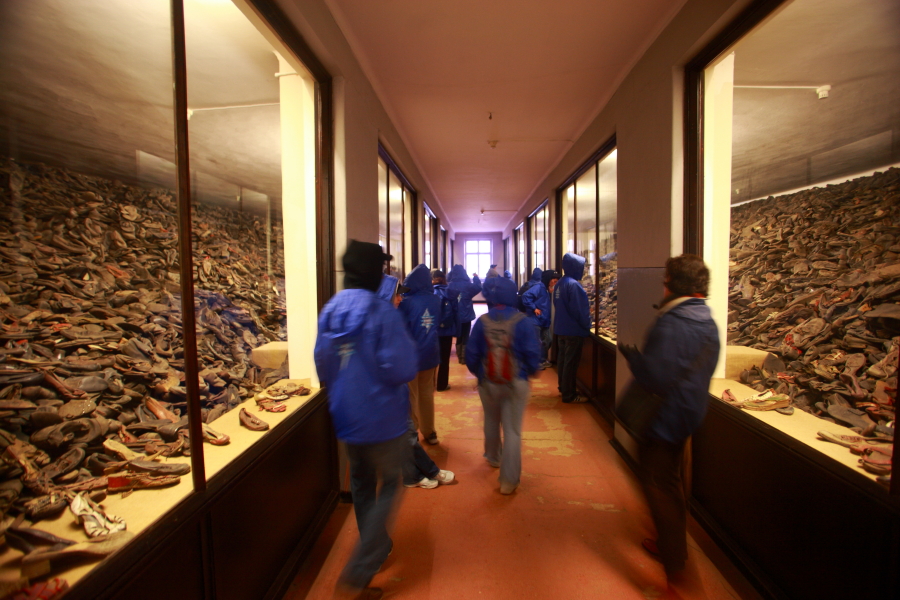
Pair Less
Piles of shoes confiscated from camp prisoners on their way to the death chambers are displayed behind glass in two large rooms. Upon their arrival, as part of the extermination process, the perpetrators systematically stripped prisoners of their belongings, valuables, clothes, hair, and finally, their humanity. The Auschwitz-Birkenau museum has similar displays of human hair, eyeglasses, prosthetics, and other personal effects of the victims.
Auschwitz-Birkenau State Museum, Auschwitz, Poland
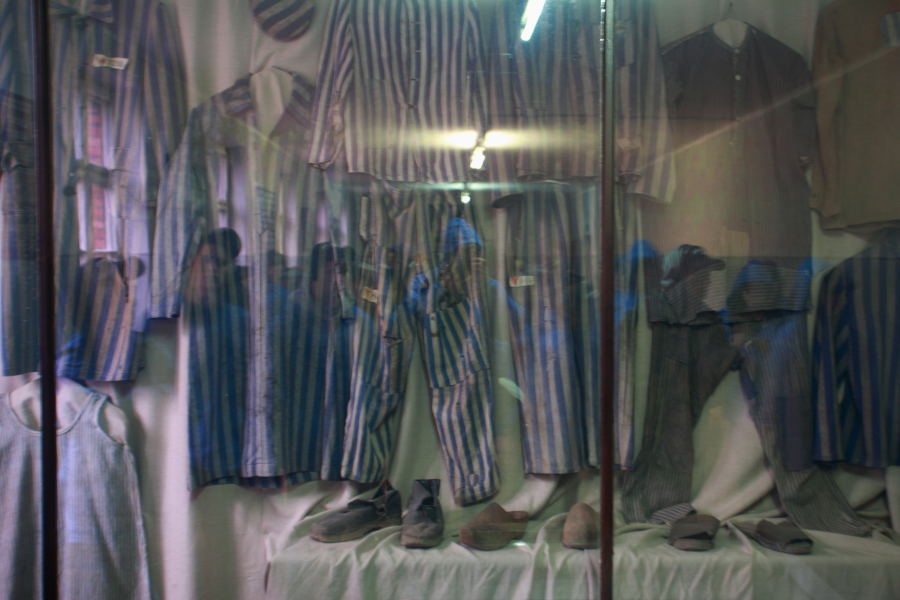
Reflections
Display of prisoner uniforms at Auschwitz. Auschwitz-Birkenau, perhaps the best known of the Nazi extermination centers, was preserved following its liberation by Soviet forces, and turned into a museum. More than one million visitors from around the world pass annually through the camp’s gate and under the slogan that adorns it, Arbeit Macht Frei (Work Sets You Free).
Auschwitz-Birkenau State Museum, Auschwitz, Poland

A View from the Past
This section of the camp, originally a Polish army barracks, became known as Auschwitz I. Smaller than Auschwitz II (Birkenau), it served as an administrative headquarters containing staff quarters and offices, as well as a prison for political prisoners initially and later a much wider demographic. It also contained spaces for medical experimentation. Other buildings in the camp contained torture chambers, where prisoners were forced to confess to “crimes”, and a court, where these confessions were used to condemn the prisoners.
Auschwitz-Birkenau State Museum, Auschwitz, Poland
The Line
Memorial cards, notes, and flowers are left by visitors at the Execution Wall in Auschwitz I. Prisoners from inside and outside of the camp were interrogated and tortured in the basement of this Block (11) and then “tried” in the courtroom above. Condemned prisoners were lined up against this wall to be shot, alone, or in groups. This wall was built to absorb bullets and was known to prisoners as the “Black Wall” or the “Wall of Death.”
Auschwitz-Birkenau State Museum, Auschwitz, Poland

Silent Wall
A group tours a display of prisoners’ pictures at the former barracks of the Auschwitz death camp. Prisoners at Auschwitz were doomed to slave labor and death. Upon being processed into the camp, the prisoners who were selected for slave labor were photographed and had their prisoner number tattooed on their left arm for identification. Most Jewish prisoners were never photographed or tattooed and died within hours of arrival.
Auschwitz-Birkenau State Museum, Auschwitz, Poland

Final Touch
The walls of the first gas chamber at Auschwitz bear scratch marks left as a final act of life by the dying, trying to escape their fate. Between 700 and 800 men, women, and children were herded into the room together, and the steel door shut behind them. Pellets of Zyklon B (Hydrogen cyanide, HCN), a common pesticide, were then dropped in from hatches in the roof, releasing their deadly gas once in contact with warm air. This mass murder technique was deemed more efficient by the Nazis, as it provided for systematic executions while preserving ammunition for the war effort and minimizing trauma on the perpetrators themselves.
Auschwitz-Birkenau State Museum, Auschwitz, Poland

In Memoriam
A group of Jewish American teens conducts a memorial ceremony in front of the gas chamber I at the Auschwitz death camp. This structure survives because camp administrators converted it to a bomb shelter in 1944 after gassing responsibilities had shifted to Auschwitz II. The structure today has been partially reconstructed as it would have appeared when used as a gas chamber and crematorium. The primary gas chambers used for killing operations in Birkenau (Crematoria II, III, IV, and IV) were demolished by the Nazis in an unsuccessful attempt to destroy evidence of genocide. Their ruins are still visible today.
Auschwitz-Birkenau State Museum, Auschwitz, Poland
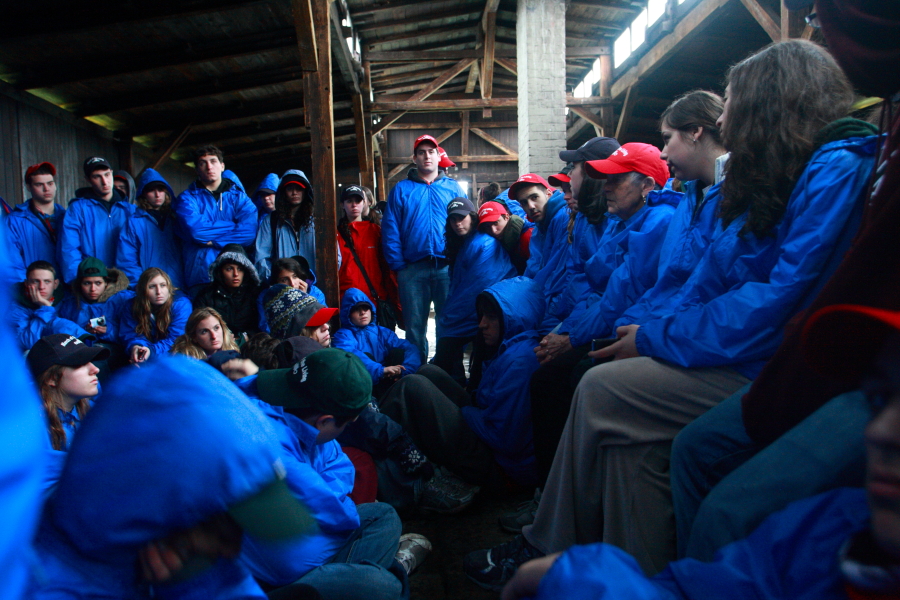
And You Shall Tell Your Children
Seated on the ground in one of Birkenau’s barracks, a group of Jewish American teens listens as Holocaust survivor Trudy Album shares her memories from this place. Trudy was brought to the camp with her family at age thirteen, and survived there for four years. After they were liberated in 1944, many of the survivors spent years trying to locate lost relatives and friends, while attempting to start new lives in the wake of the horrors they had endured.
Auschwitz-Birkenau State Museum, Auschwitz, Poland

Generations
Tokens of commemoration are left on the railroad tracks at Birkenau. The tracks that once led hundreds of thousands of men, women, and children to their death now lead thousands of youths on a life-changing educational experience every year. The March of the Living, an annual event that is observed on Yom HaShoah (the Jewish Holocaust Remembrance Day), sees over ten thousand people march from Auschwitz I to Birkenau in a display of respect, unity, and hope.
Auschwitz-Birkenau State Museum, Auschwitz, Poland

With These Words
At the conclusion of the March of the Living ceremony at Auschwitz-Birkenau, HaTikvah (The Hope), the Israeli anthem, is heard throughout the camp. Trudy Album, a Holocaust survivor who survived the camp, is overcome with emotions while flanked by members of her tour group, Jewish American teens.
Auschwitz-Birkenau State Museum, Auschwitz, Poland

Shadows In A Forest
A forest an hour north of Auschwitz. As the trees pass by the bus window, like a nickelodeon playing in the setting sun, I imagine the Resistance fighters during World War II, who used these woods as staging grounds for their attacks against the Nazi forces occupying Poland.
Highway E75, Poland
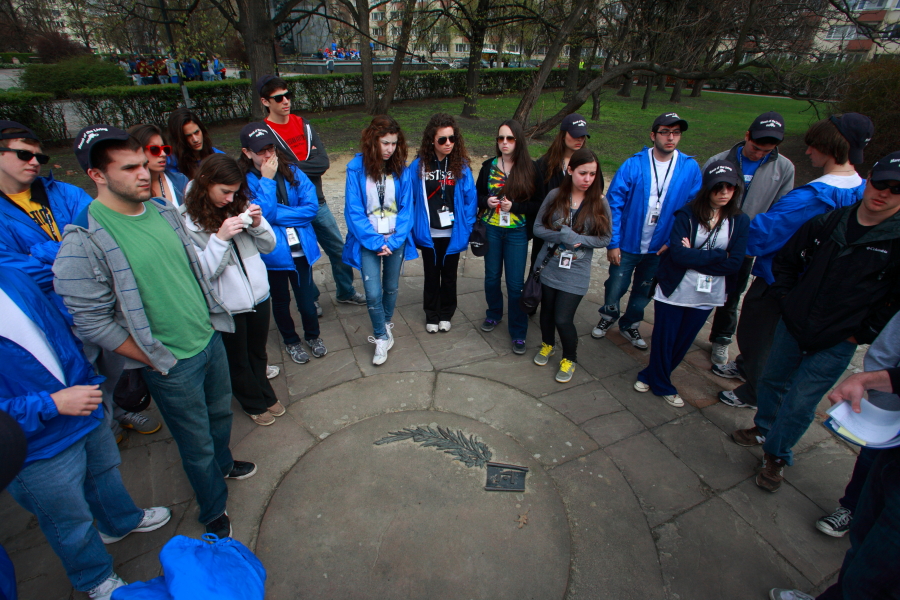
Subterranean
Resistance fighters used the sewer system underneath the Warsaw ghetto streets as a conduit for moving people, supplies, and information within the ghetto and into the surrounding city. The postwar symbolic emblem on the manhole cover, located in front of the memorial monument to the Warsaw ghetto uprising, displays scrolls with the Hebrew letter Bet, the first letter of the book of Genesis (B’reshitבְּרֵאשִׁית ) and an olive branch extending from it.
Warsaw ghetto site, Warsaw, Poland

The Screaming Earth
The way to Treblinka travels off a highway, and then via narrowing roads that pass through small villages which seem to have evaded the progress of time. A quiet path leads to the death campgrounds, long sanitized of the extermination operation and horrors that placed its name in infamy. The peaceful atmosphere does not cloud the aura of this clearing in the forest. Even absent of the physical evidence, this place is clearly one of hell’s compartments.
Treblinka extermination camp, Treblinka, Poland
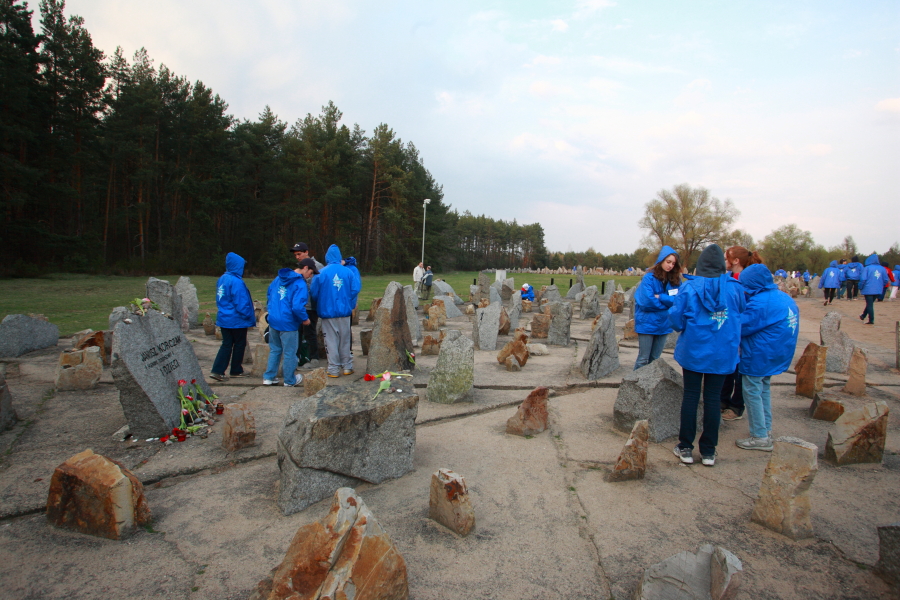
The Quiet Earth
The Treblinka extermination center memorial features hundreds of stones bearing the names of the Jewish communities annihilated throughout Europe during the Holocaust. The place is eerily quiet, peaceful, and beautiful. Hundreds of stones are visible in all directions, designating communities that have been erased from existence. For many of them, these are the only headstone remaining.
Treblinka extermination camp, Treblinka, Poland

Chamber of Death
Inside one of the gas chambers at Majdanek extermination camp. The Nazis disguised the room as a public shower to maintain the illusion of normality for the victims until the last moment. Majdanek, located in the suburbs of Lublin, remained largely intact as retreating Nazi authorities lacked time to destroy it. It was the first major camp liberated on July 24, 1944, by the Red Army.
Majdanek extermination camp, Lublin, Poland
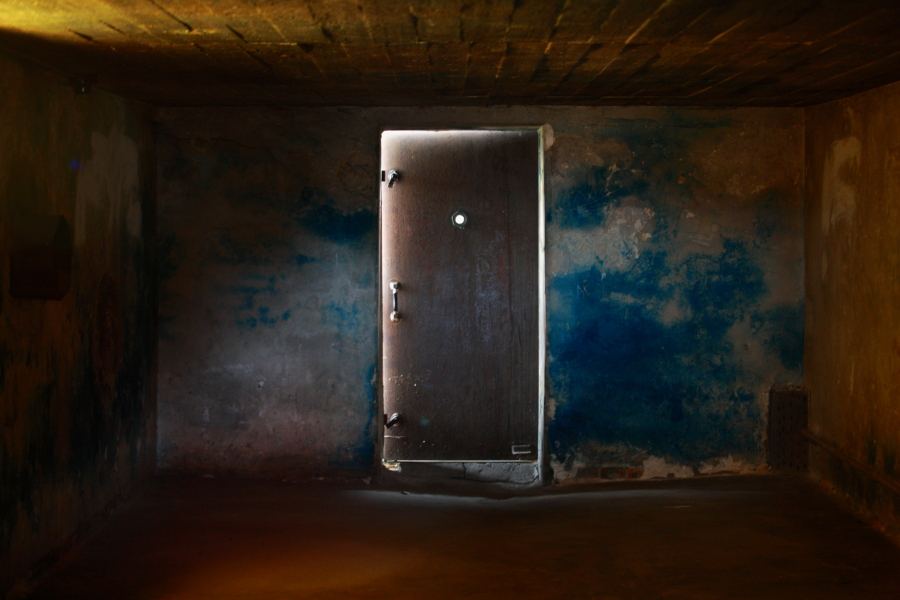
The Way Out
A gas chamber at Majdanek extermination camp. This door to the yard would open after the crowded room had entirely perished. Camp prisoners would remove the bodies for further processing such as extraction of gold teeth and final examination for hidden valuables. The bodies would be moved to the crematorium or burned in the open. The walls of the room have a blue tinge from the repeated use of Zyklon B.
Majdanek extermination camp, Lublin, Poland
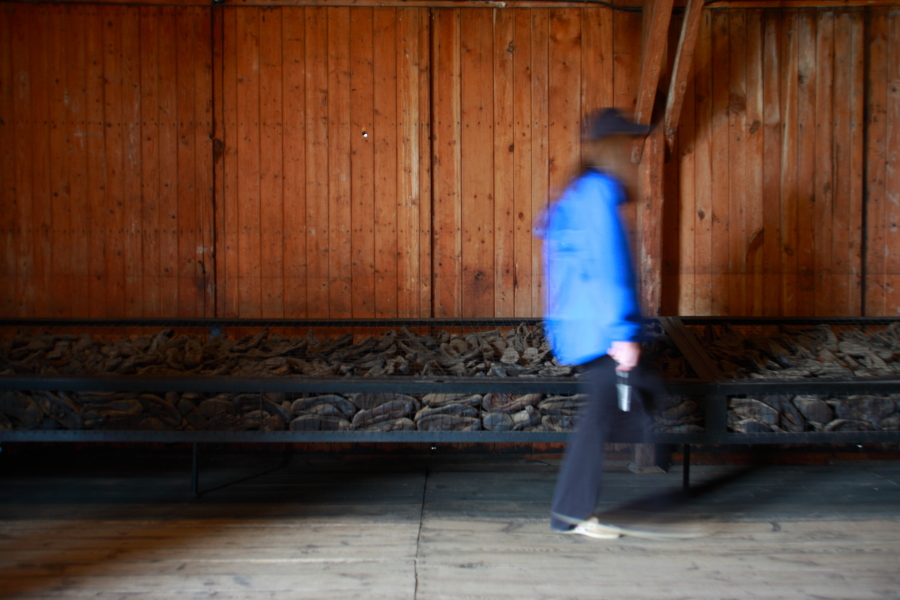
Empty Shoes
The murder process was similar in all the extermination centers. This visitor is passing by a display of shoes taken from those whose steps ended here at Majdanek.
Majdanek extermination camp, Lublin, Poland
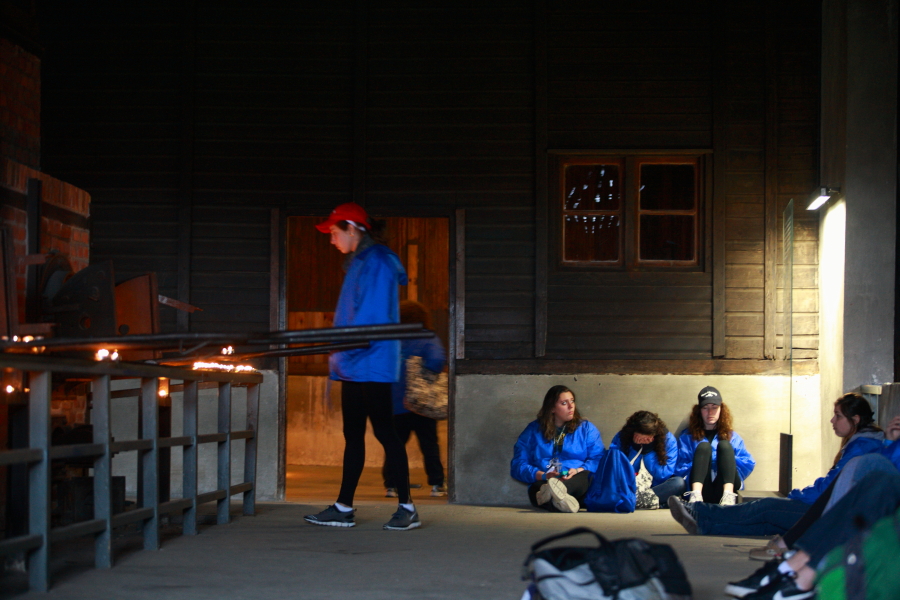
To Ashes
The crematorium at Majdanek is a large, silent room. Thousands of men, women, and children’s bodies were turned to ash in this room. Some visitors choose to light memorial candles and place them in front of the ovens, others sit or stand in quiet vigil.
Majdanek extermination camp, Lublin, Poland
Mass Grave
From the gas chambers, the victims’ bodies were carried into crematoriums and burned. Their remains were then taken to a corner of the camp, where they were piled into a giant mound of ash in the open air. Following the liberation of the camp, a concrete dome was erected over this final resting place for thousands of victims.
Majdanek extermination camp, Lublin, Poland

Remembrance
Yom HaZikaron (יום הַזִיכָּרון, Memorial Day) at Mount Herzl National Cemetery in Jerusalem. As family members and friends of the fallen hold vigils by the grave sites of their loved ones, a group of Jewish American teens engages in discussion about the cost of war while seated on one of the empty plots.
Mount Herzl National Cemetery, Jerusalem, Israel

Future, Beware! is a photography exhibit by artist Ophir Palmon. It was on display at the Osborn Gallery on the campus the University of Nebraska Omaha, from January through February of 2013. The exhibit was sponsored by these organizations:
Frances and Sam Fried Holocaust Education Fund
Don and Connie J. Osborne Family Gallery
Natan and Hannah Schwalb Center for Israel and Jewish studies
Council on Holocaust and Genocide Studies
UNO History Department
UNO College of Arts and Sciences
UNO Criss Library



